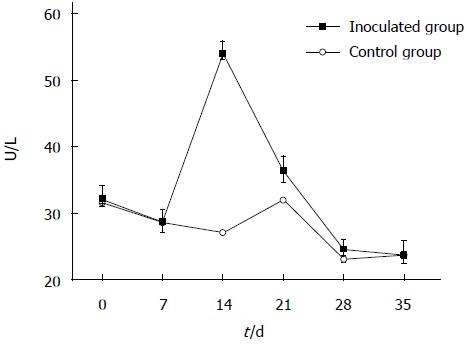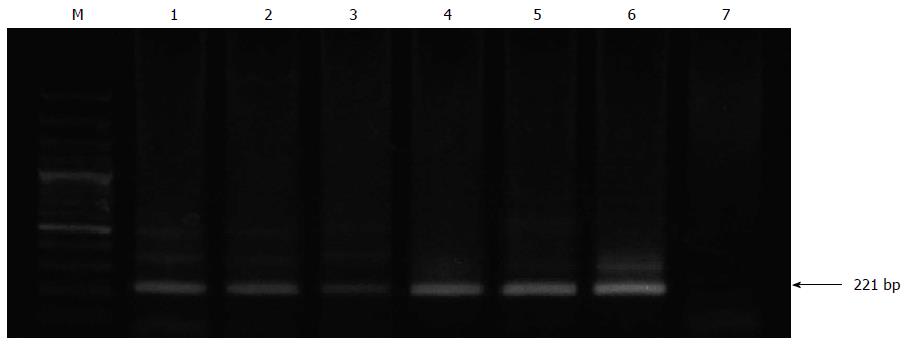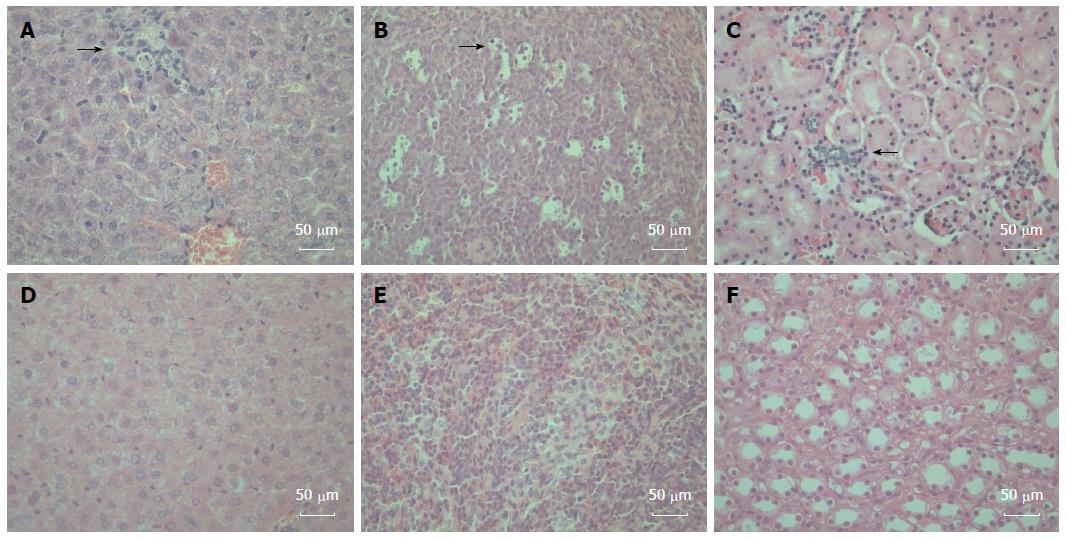Copyright
©The Author(s) 2015.
World J Gastroenterol. Jan 21, 2015; 21(3): 862-867
Published online Jan 21, 2015. doi: 10.3748/wjg.v21.i3.862
Published online Jan 21, 2015. doi: 10.3748/wjg.v21.i3.862
Figure 1 Changes in alanine aminotransferase levels after hepatitis E virus infection.
Z:ZCLA Mongolian gerbils showed alanine aminotransferase (ALT) level changes upon hepatitis E virus infection. The ALT levels were moderately increased in the inoculated group compared with the control group at days 14 and 21 post-inoculation. No changes were observed in the control group.
Figure 2 Reverse transcription-nested polymerase chain reaction detection of viral shedding in feces.
Hepatitis E virus RNA was detected by reverse transcription-nested polymerase chain reaction (RT-nPCR) in feces from all inoculated gerbils. Lane M: DNA marker; Lanes 1-6 represent experimental time points (in weeks): the second round PCR products of gerbil feces samples on intermittent days; Lane 7: a negative control containing water.
Figure 3 Histopathologic changes in the hepatitis E virus-inoculated Mongolian gerbils.
A: A representative liver sample showing slight histiocytic hepatitis and focal accumulation of inflammatory cells surrounding hepatocytes [21 d post-inoculation (DPI)]; B: A representative spleen sample showing ruptured and enlarged splenocytes with multiple vacuolar degeneration (21 DPI); C: A representative kidney showing disarranged kidney cells with increased infiltrating lymphocytes and macrophages (35 DPI); D: A representative negative control liver; E: A representative negative control spleen; F: A representative Negative control kidney. All tissues were stained with hematoxylin and eosin. Original magnifications × 400.
- Citation: Hong Y, He ZJ, Tao W, Fu T, Wang YK, Chen Y. Experimental infection of Z:ZCLA Mongolian gerbils with human hepatitis E virus. World J Gastroenterol 2015; 21(3): 862-867
- URL: https://www.wjgnet.com/1007-9327/full/v21/i3/862.htm
- DOI: https://dx.doi.org/10.3748/wjg.v21.i3.862











